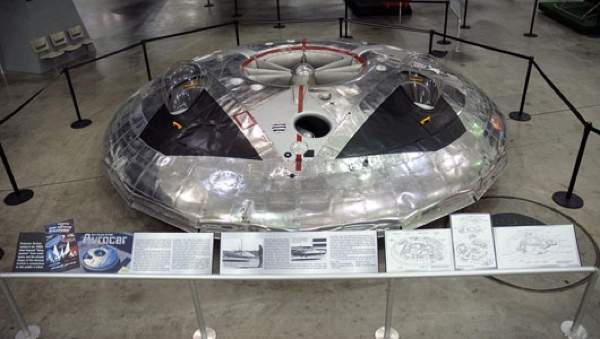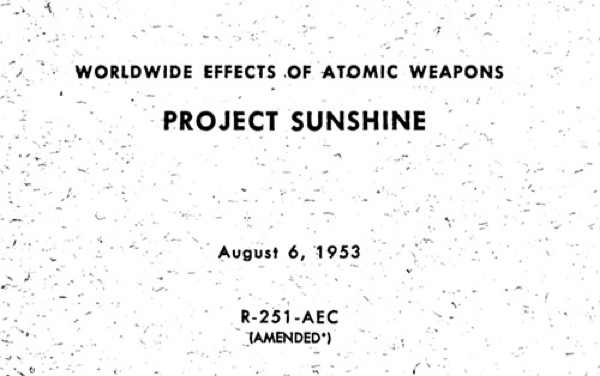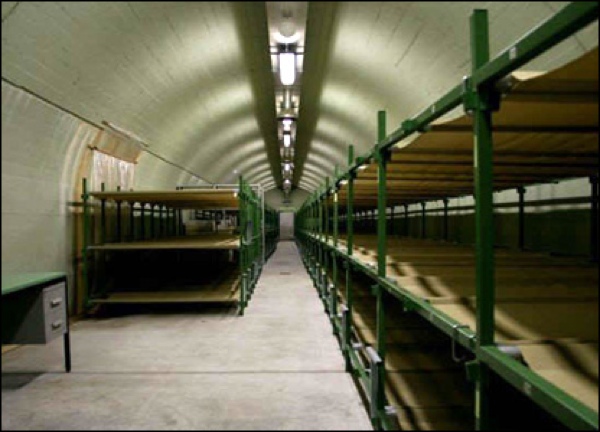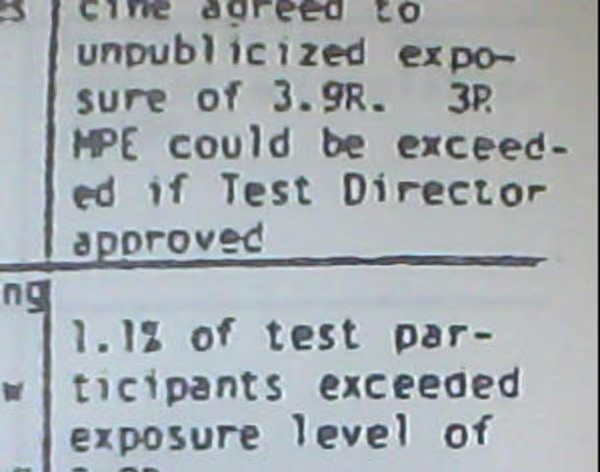 Crime
Crime  Crime
Crime  Technology
Technology 10 Hilariously Over-Engineered Solutions to Simple Problems
 Miscellaneous
Miscellaneous 10 Ironic News Stories Straight out of an Alanis Morissette Song
 Politics
Politics 10 Lesser-Known Far-Right Groups of the 21st Century
 History
History Ten Revealing Facts about Daily Domestic Life in the Old West
 Weird Stuff
Weird Stuff 10 Everyday Products Surprisingly Made by Inmates
 Movies and TV
Movies and TV 10 Actors Dragged out of Retirement for One Key Role
 Creepy
Creepy 10 Lesser-Known Shapeshifter Legends from Around the World
 Animals
Animals 10 Amazing Animal Tales from the Ancient World
 Gaming
Gaming 10 Game Characters Everyone Hated Playing
 Crime
Crime 10 Terrifying Serial Killers from Centuries Ago
 Technology
Technology 10 Hilariously Over-Engineered Solutions to Simple Problems
 Miscellaneous
Miscellaneous 10 Ironic News Stories Straight out of an Alanis Morissette Song
Who's Behind Listverse?

Jamie Frater
Head Editor
Jamie founded Listverse due to an insatiable desire to share fascinating, obscure, and bizarre facts. He has been a guest speaker on numerous national radio and television stations and is a five time published author.
More About Us Politics
Politics 10 Lesser-Known Far-Right Groups of the 21st Century
 History
History Ten Revealing Facts about Daily Domestic Life in the Old West
 Weird Stuff
Weird Stuff 10 Everyday Products Surprisingly Made by Inmates
 Movies and TV
Movies and TV 10 Actors Dragged out of Retirement for One Key Role
 Creepy
Creepy 10 Lesser-Known Shapeshifter Legends from Around the World
 Animals
Animals 10 Amazing Animal Tales from the Ancient World
 Gaming
Gaming 10 Game Characters Everyone Hated Playing
10 Ridiculous Cold War Government Projects
The Cold War was a period of time when all of the countries of the world waited with baited breath to see what the outcome of the decades-long hard staring contest between the United States and the Soviet Union would be. As the nuclear arms race ramped up, some of these countries (either voluntarily or otherwise) picked sides; some began developing nuclear programs of their own, and most just kept their heads down and quietly hoped for another day without complete annihilation.
Most are aware of some of the truly shady things done by intelligence agencies and military organizations during this period, but the sheer scope of programs designed to figure out the capabilities of and/or screw with the other guy—and the ridiculous amounts of money and effort involved—is staggering. Here are some Cold War-era programs that should never have been—from the laughably ineffective to the jaw-droppingly criminal.

Before the development of the Intercontinental Ballistic Missile and the real threat of total nuclear destruction, people projected their Atomic fears onto all kinds of weird things. In the 1950s, flying saucers were all the rage. Little green men were the go-to villains of movies and television, and sightings of flying saucers exploded to such a degree that the US Air Force were essentially forced to take them seriously.
At some point, someone undoubtedly suggested that perhaps the saucers had a more sinister origin… a Russian origin. And by God, if there was any chance that the Russkies had a flying saucer, the US was damn well going to have one, too.
US Air Force project 1794, as described in an official document from 1956, was an effort to create a Vertical Takeoff and Landing honest-to-Pete flying saucer that would just beat the crap out of anything else in the sky, including the USAF’s own fighter jets. This machine, built by Canadian aerospace firm Avro at the behest of the United States government, was projected to be capable of reaching altitudes of 100,000 feet while traveling at Mach 4 and also, did we mention, being a flying saucer.
Its performance fell somewhat short of expectations. That is to say, it began to wobble uncontrollably any higher than three feet off the ground, never got beyond blistering speeds of 35 MPH, and proved completely aerodynamically unsound in wind tunnel tests. We’re not sure if “Aerospace” means something else in Canada, but then it should have been obvious to everyone involved from the beginning that the very idea of a flying saucer is just wildly unscientific.

The Hanford Site, a decades-old government complex in Washington State, is the site of the first working plutonium producing nuclear reactor. Plutonium manufactured there was used in the very first atomic bomb test, and also in Fat Man—the bomb that destroyed Nagasaki and ended World War II.
Residents of the nearby town of Hanford were subjected to many small releases of radioactive iodine between 1944 and ’47, as batches of spent fuel that were allowed to decay for a shorter time than normal were released as clouds into the atmosphere. While there is little documentation or detail about these exposures, the “Green Run” of 1949 is slightly more well-documented—and terrifying.
A batch of fuel of the type that was usually allowed to cool for up to 101 days underwent only a 16-day cooling period, making the exhaust from the plant much, much more radioactive than normal. The resulting cloud was released over a populated area, its movement tracked by the Air Force.
The likely purpose of the experiment was to get an idea of the pattern with which such a cloud could spread, so that similar patterns could be detected via reconnaissance in the USSR, and their plutonium production facilities could be located and kept track of. But that’s kind of the scary thing—even that is only an educated guess on the part of one of the scientists who helped run the experiment. Even they weren’t told for sure.

And in the Refusing To Learn From History department, we have this decades-long Canadian program designed to keep tabs on Communists and Communist sympathizers throughout America’s neighbor to the north. The 1946 Gouzenko Affair, in which Canadian spies were accused of passing secrets the the Soviets in one of the first North American trials of its kind, helped to jump-start the Cold War and was the beginning of a (not so) healthy Red Paranoia that was soon to sweep the continent.
Part of the project—the part that was implemented—involved collecting names, and lots of them; 16,000 suspected Communists and 50,000 potential “sympathizers” had made PROFUNC’s list by the time all was said and done. The really insane part of this plan was its provision for “M-Day”, which would have been implemented in the event of a “national security crisis”; which, if you think about it, could cover a lot of things.
Short for “mobilization day”, this would have involved literally rounding up everyone on the list and sticking them into internment camps—you know, like the ones the American government had employed to detain Japanese Americans during World War II, and eventually had to apologize profusely and pay reparations for. These camps were in place all across Canada, ready to house thousands of suspected Commies should a “crisis” arise.
The very detailed plan helpfully provided for a course of action should anyone try to escape one of these hypothetical camps in this purely “what if” scenario: they would be shot dead. Hypothetically.

By the 1960s, the Atomic Energy Commission was funding all kinds of horrifying experiments, the worst of which we’ll get to shortly. They thought they could find answers to a couple of their burning questions—how does radiation affect a completely unspoiled population, and how would disease spread after the outbreak of nuclear war—by studying the Yanomami Indian tribe of Venezuela. After doing unbelievably terrible things to them.
While intentional exposure to radiation did occur, probably the single most harmful aspect of this incursion into the Amazonian rainforest was the introduction of a measles “vaccine”, Edmonson B, that was known to essentially cause measles, which was unknown in the indigenous population. Introduction of the vaccine kicked off an epidemic of the disease that killed at least hundreds, and maybe thousands, of Yanomami.
Geneticist James Neel, who ran the experiment, explicitly ordered his research team to refrain from offering medical assistance or aid of any kind as the epidemic spread, as they were only there as observers—probably the most ironic sentiment in the history of science. All of this funded by the United States Atomic Energy Commission, and if you find that to be shocking, just wait.

For nearly twenty years, from the early ’50s to the early ’70s, Colonel James Ketchum ran hundreds of experiments at the Edgewood Arsenal outside of Baltimore, Maryland. The Edgewood experiments overlapped with a number of other shady government operations—they were said to be a subset of the CIA’s notorious MKULTRA program, and it has become known that eight German (see: ex-Nazi) scientists worked there for a time under Project Paperclip. Col. Ketchum was of the belief that chemical warfare was a “humane” alternative to conventional warfare with bullets and grenades, and he spent years at Edgewood developing these “humane” weapons by testing them on healthy US soldiers—hundreds of them.
None of them gave informed consent, or were told what they were being given, and no effort was made after the fact to track the progress or health of anyone who had unwittingly taken part. Substances tested ranged from the predictable (hallucinogens like the ever-popular LSD) to the insane (nerve gases like VX and sarin—yes, sarin), and to this day nobody has been prosecuted or even disciplined.
Col. Ketchum, for that matter, is still alive and continues to defend not only his experiments, but the use of chemical and biological agents in warfare. One must assume that he never volunteered himself as a test subject. The Edgewood facility, part of Aberdeen Proving Ground, was shut down and all chemical weapons stockpiled there were destroyed as of 2006.

There have been numerous instances of US cities being used as testing grounds for chemical or biological agents—most of these tests have taken place using inert, non-harmful chemicals, in order to examine spreading patterns and determine how such weapons would be deployed. Of course, the use of such weapons in war was outlawed by the Geneva Protocol of 1929, making the intent behind such experiments rather questionable—but a couple in particular veered straight into the deplorable.
Of the many tests conducted with zinc cadmium sulfide, a fine fluorescent powder, the two that took place a decade apart in St. Louis in the mid-’50s and ’60s stand out for their irresponsibility. Motorized blowers were placed on top of low-income housing projects (really), schools, and in the backs of vans, to disperse the chemical over underprivileged areas of St. Louis in both cases. The army told the city that it was a test of experimental “smokescreens” to shield the city from some undefined Soviet offensive—but in reality, St. Louis was chosen because of its similarity in layout to several Russian cities that the US thought it may want to someday attack with illegal biological weapons. Research undertaken by a St. Louis area college professor has recently suggested that radioactive particles may have been mixed in with the chemical—research spurred by abnormally high rates of cancer in the area.
A 1955 CIA experiment in the Tampa, Florida area makes this look borderline ethical. Whooping cough virus obtained from an army Biological Warfare Center was released over the area to see how it would spread—live, deadly, actual whooping cough. Cases of the disease in that state tripled, and 12 people in the Tampa area died as a direct result of the “test”.

Following the somewhat standard protocol of giving innocuous-sounding names to shamefully unethical projects, SUNSHINE was part of an effort by the Atomic Energy Commission to determine the long-term effects of radiation exposure on the human gene pool. Specifically, it had become known that above-ground nuclear tests were kind of damaging human genetics on a planet-wide scale, and the AEC wanted to know just how much was too much. The easiest way to do this was by examine bones and teeth of those who had been exposed.
How to acquire these? Why, by grave robbing, of course. Preferably infant graves, as they were particularly interested in examining the underdeveloped bones of infants who had been exposed. This is not an exaggeration: AEC Commissioner Willard Libby said in 1953, and we quote: “So human samples are of prime importance and if anybody knows how to do a good job of body snatching, they will really be serving their country.”
Body. Snatching. Literally stealing human remains, with no notice given to or consent sought from the families of the deceased. Later in the decade, pretty much the same data was gathered in a much more responsible manner—by collecting and examining hundreds of thousands of baby teeth, which one notably does not have to be dead to surrender.

While most European countries spent this era with their heads down, trying to pretend there wasn’t gigantic, America-baiting target directly to to the East, Switzerland had other plans. The famously neutral Swiss came up with a purely practical solution to the threat of nuclear war, and then proceeded to take that solution to the craziest extreme of any nation on Earth.
Pictured above is a 1950s fallout shelter of the type we’ve all seen—they’re synonymous with the Cold War and the Red Scare and the Capitalized Menace. You’d think that the United States would probably have more of these than any other nation in the world, but you’d be wrong—in fact, Switzerland does. Let us rephrase that: Switzerland has by far the most fallout shelters of any nation on the planet. Wait, let us rephrase that again.
Switzerland has enough fallout shelter to house its entire population. They’re mandated by Swiss law—property owners must have “a protected place that can be reached quickly from his place of residence” and “apartment block owners are required to construct and fit out shelters in all new dwellings”. Some other European nations, like Finland and Norway, had similar laws that were repealed decades ago, but the Swiss laws remain active to this day.
It turns out there’s a reason the Swiss are so famously neutral in international disputes, and it’s not because they’re just really chill. It’s because of an enormous sense of self-preservation. Service in the Swiss Army is mandatory for all male citizens (and that army is surprisingly formidable), because it turns out that being armed to the teeth and teaching the entire population to fight is a pretty effective way to remain neutral.

In 1983, at the height of the saber-rattling between the US and USSR., there was a pervasive, underlying uneasiness that permeated American culture. It actually seemed like a possibility that mushroom clouds might appear in the horizon at any moment, that we might actually destroy ourselves; and in response to this surreal scenario, American President Ronald Reagan proposed a solution straight out of science fiction.
The “Strategic Defense Initiative” or SDI, colloquially referred to as “Star Wars“, proposed a series of space-based laser weapons that would shoot down incoming Soviet ICBMs. Billions of dollars were spent on the project between 1983 and 1993, as SDI became a subdivision of the Department of Defense.
The problem isn’t that it didn’t work—it’s that such a system was never even shown to be possible. Criticism rang far and wide despite the President’s enthusiasm for the project, simply because on the surface it appeared to be exactly what it was—obviously and transparently unscientific.
A 1987 study concluded that it would take at least ten more years of research—not to make SDI work, but to determine if it were even feasible. This was, of course, six years BEFORE the plug was finally pulled on space-based laser defense.

And now for something truly horrifying. Beginning at the very dawn of the Atomic Age in the ’40s (when at least an argument could be made that science simply didn’t know any better) and continuing well into the ’70s (at which point said argument would be laughable), the Atomic Energy Commission in conjunction with other government agencies performed dozens of tests at many locations on hundreds of unwitting subjects to study the effects of radiation on the human body. Details of these experiments were kept under wraps until 1993, when Albuquerque Tribune reporter Eileen Welsome began publishing a series of reports entitled “The Plutonium Experiment”, for which she eventually won the Pulitzer Prize.
In them, she meticulously laid out information she had begun collecting while sifting through Kirtland Air Force base documents nearly a decade earlier describing the experiments, each more horrible than the last: hundreds of expectant mothers were given radioactive “vitamin drinks” to see how quickly the radioisotope crossed the placenta; patients at Billings Hospital in Chicago were literally injected with plutonium (one of whom was given the highest dose ever measured in a human); disabled schoolchildren were spoon-fed radioactive oatmeal after being told they were part of a “science club” and we again would like to remind you that we are not making this up.
President Clinton, by executive order, created a committee to look into just how extensive the government’s human-irradiating activities had been. The committee’s thousand-page report was released in October 1995, and contained many, many more tidbits on the long, terrible history of the “Human Radiation Experiments”:
Dozens of patients at several hospitals were injected with or fed radioactive material, usually elderly, black or disabled patients. Planes were ordered to fly through radiation clouds from bomb tests just to see how it would affect the crew. Subjects were made to dirty up their hands with radioactive soil to see what, if any, cleaning agents could remove the contamination, and on and on.
A 1986 report by the staff of Massachusetts Congressman Ed Markey titled “American Nuclear Guinea Pigs”, which had been buried at the time of its release by the Reagan administration, was cited at length by the Committee—especially its helpful recommendation that “It seems appropriate to urge the Department of Energy to make every practicable effort to identify the persons who served as subjects for the experiments described below, to examine the long term histories of subjects for an increased incidence of radiation associated diseases, and to compensate these human guinea pigs for damages they have suffered.”
Appropriate? Yes, that would have been very appropriate. Was it ever done? No, no it was not.
Following Floorwalker on Twitter, or checking out his blog, is 99% guaranteed not to get you on any government watch lists.








